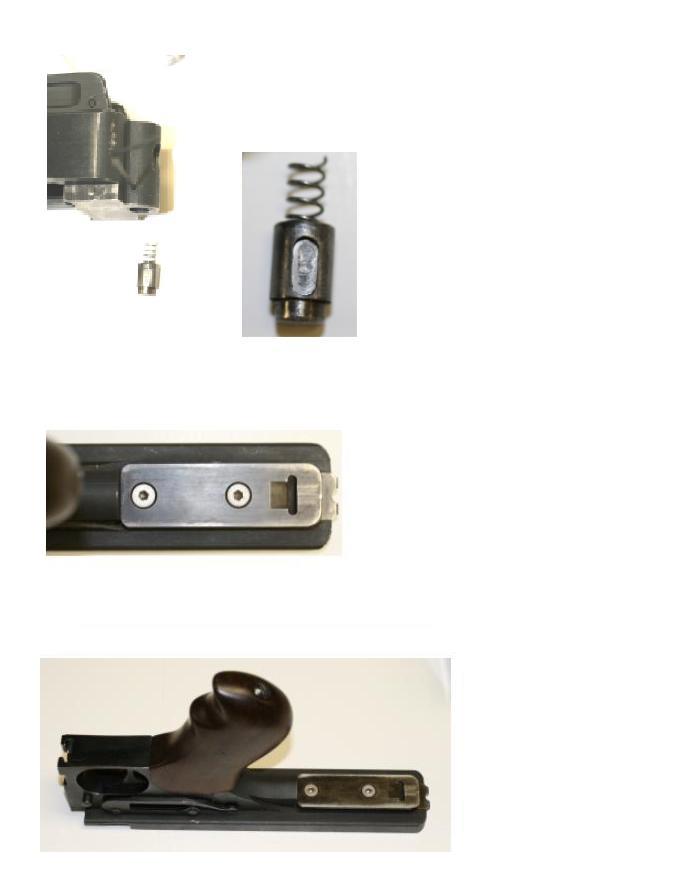4
(Above) Rear of receiver with an Allen wrench inserted
into the set screw. (Above right) Close up of the frame
latch pin with the machined flat.
A previous owner had also enjoyed improving his
Model 1927A1. The first of these improvements was
to the spring loaded frame latch. On a full automatic
Thompson the latch is depressed and the frame and
receiver are separated. The latch is retained in the
depressed position by the frame and the frames in-
ternal parts. On the Model of 1927A1s, the frame
latch has to be held recessed by a screw driver to
allow the frame to clear it. This operation takes a
little bit of practice to get used to doing.
Serial number 153 has a small hole drilled and
tapped into the receivers frame latch hole recess.
Into this hole is inserted an Allen head set screw.
This set screw is then tightened down against a flat
that has been machined into the frame latch. When
tightened down the frame latch is held retracted or
extended. When retracted it makes taking apart the
receiver and frame much more user friendly.
The second improvement feature was the installa-
tion of a removable buttstock mount on the trigger
frame. West Hurley sold a kit for this purpose.
The kit required the buyer to machine the trigger
frame to create a flat area for the mounting of a
bracket. The bracket was then screwed to the frame.
With the kit installed it would allow any World War
II or earlier M1928 buttstock to be used. However,
most buyers of the kits were unable to machine the
frames, due to expertise or lack of proper machines.
This one was installed very neatly.
West Hurley sold a kit for this purpose. The kit required
the buyer to machine the trigger frame to create a flat area
for the mounting of a bracket. The bracket was then
screwed to the frame.

